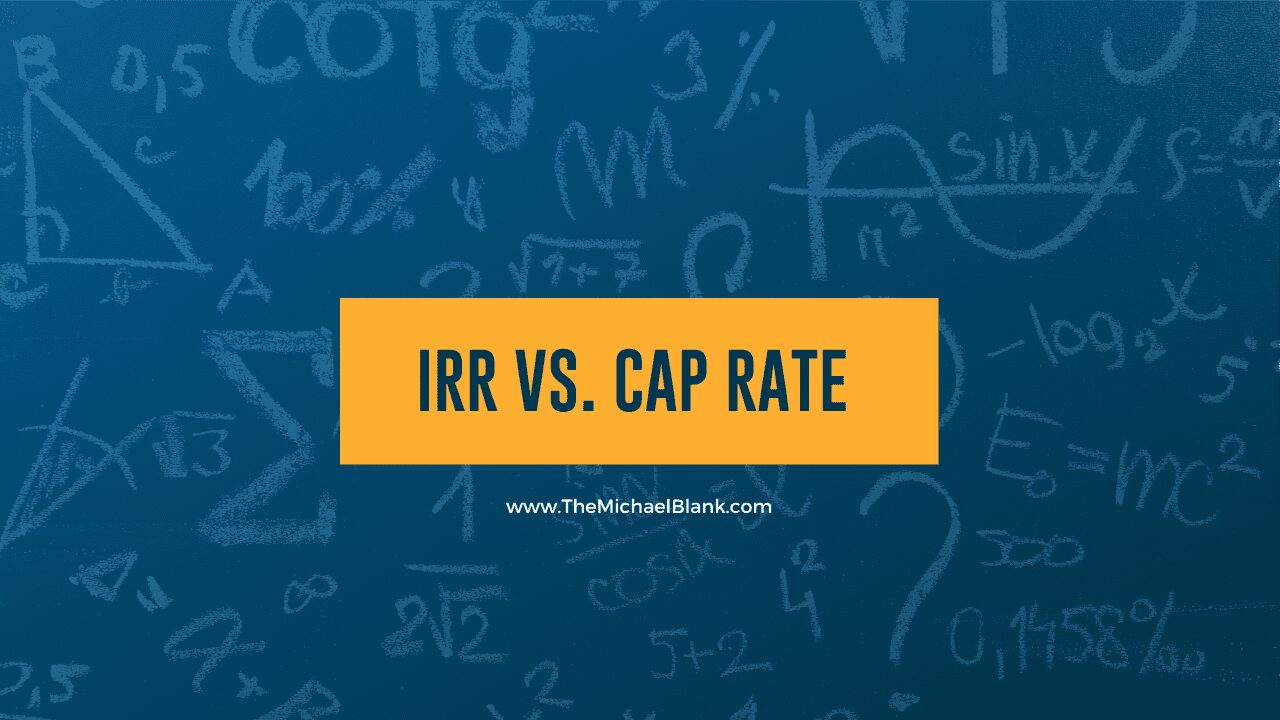We like to explore the terms you need to understand work as a passive investor. Recently, we shared a post explaining the difference between Cash-on-Cash and Cap Rate. Today, we want to talk about the difference between cap rate and IRR.
Make sure you download ALL my resources for FREE at this link: https://themichaelblank.com/vault
IRR vs. Cap Rate
These are two metrics commonly used to evaluate commercial real estate investments, and you may wonder about the difference between the two.
What is a Cap Rate?
A Cap Rate, which is short for “Capitalization Rate” is a formula used to estimate the potential return an investor will make on a property. Knowing the Cap Rate of a property enables you to compare the opportunity with other investments.
The cap rate is expressed as a percentage, and it varies according to asset class, the quality of the asset, and other factors.
How We Calculate Cap Rates
The cap rate for a building is derived by dividing the net income by the price or total cost of the building.
Basically, Cap Rate = Net Operating Income (NOI) / Property Value or Cost
What is IRR?
IRR stands for “Internal Rate of Return.” Another way to assess the value of a property, The IRR expresses what you will make on an investment over the hold period. It also takes into consideration potential changes in income, property value, and dept.
The IRR describes the sum of all future cash flow. The sooner the same earnings from an investment are received, the higher the IRR.
How IRR is Calculated
Calculating IRR is somewhat of an abstract concept that might seem complicated at first.
The IRR is essentially a way to discount earnings received in the future; the further in the future earnings are, the less valuable they become.
So, in order to determine IRR, you need to know the projected yearly cash flow for the property, which includes rent and the sale of the property.
That creates a challenge with calculating the IRR that even experienced investors can struggle with.
Using These Metrics
Cap rates and IRR are both useful tools for projecting the returns an investor might expect to earn.
The most important distinction between cap rates and IRR that you should keep in mind is cap rates provide only a snapshot of the value of a property at a given moment in the investment lifecycle, whereas IRR provides for an overall view of the total returns on the investment on an annualized basis.
We hope that helps bring some clarity around these two terms and how they are used to assess and value deals.

